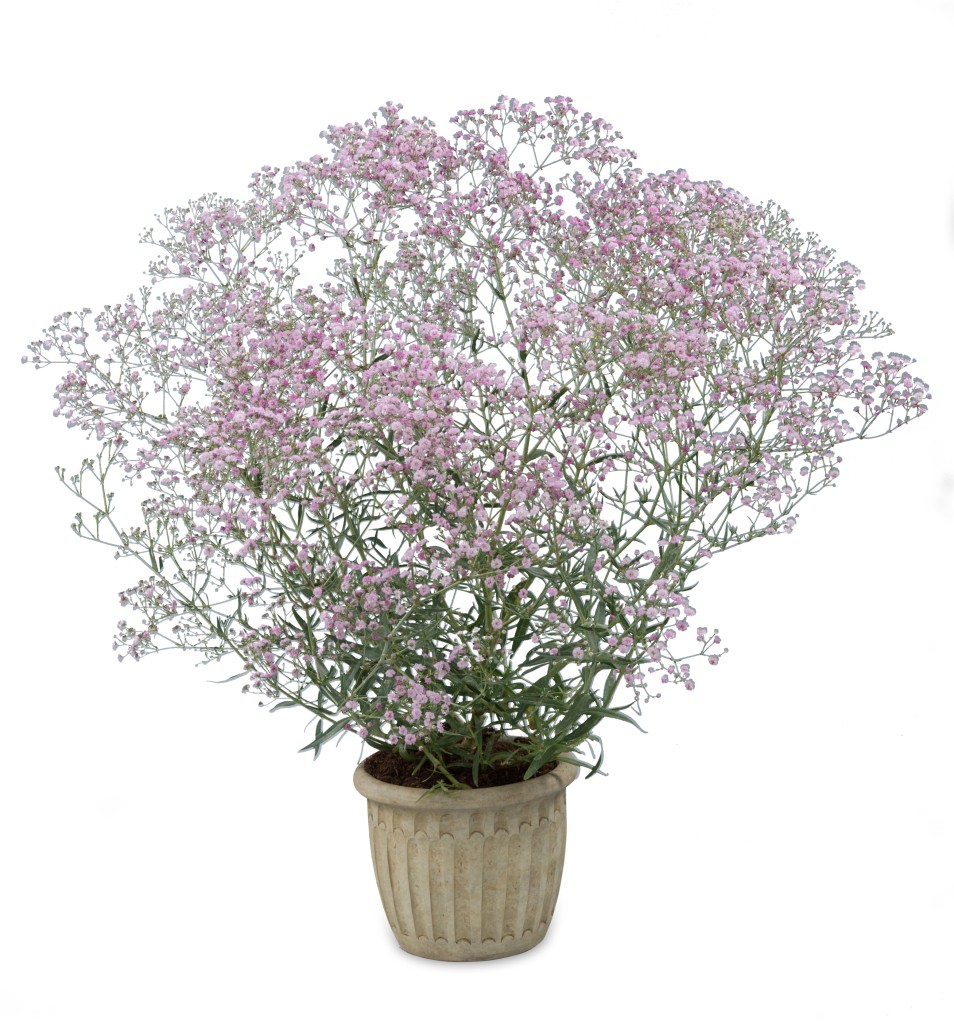
Crop Culture Report: Gypsophila Festival Series
While long known as a superior cut flower, gypsophila has only recently gained attention for its potential as an excellent pot plant, container plant and even for its ability to add interest in flower beds. The Festival series provides all of those benefits and more, offering the versatility to perform as a superior cut flower as well. Festival varieties flower early under long day conditions, and offer an extended flowering period covering spring, summer and autumn.
With both semi and double flowers in the series, Festival produces tiny delicate flowers (less than half an inch) in clusters on plants ranging from 12 to 16 inches tall. Growth habits range from appealingly compact to medium to upright and vigorous.
Seven colors make up the series, in soft to bright shades of pink and white. Three of the newest colors are Pink Splash, White Flare and Pink Lady. Pink Splash produces medium-sized pink clusters of flowers eight to 10 weeks after planting. Growing only 12 to 14 inches tall, it stays appealingly compact. White Flare bears prolific beautiful clusters of small, glowing white semi-double flowers 12 to 14 weeks after planting. It has a petite, compact habit, reaching only 14 to 16 inches tall. Pink Lady is a vigorous grower producing beautiful large, deep pink, semi-double flowers 11 to 13 weeks after planting.
All of the Festival varieties work well as standalones, in combinations or as cut flowers. They are hardy in Zones 4 to 9.
Culture
Root for two to three weeks at propagation temperatures of 64 to 77¡ F. Rooting hormone is recommended (0.8 percent IBA).
Plant one cutting per 4-inch (10 cm) pot. Plants will be ready for sales (from rooted cutting) within 10 to 13 weeks without pinching. For a 6-inch pot, use three plants per pot.
Drench with a broad-spectrum fungicide at liner planting as a preventative measure. For a more branched product, pinching is recommended one month after planting.
Immediately after transplant, water and fertilize in moderation. After 10 days of establishment, fertilize with an NPK ratio of N: 100 to 170 ppm, P: 20 to 30 ppm, K: 100 to 170 ppm, and average levels of micronutrients. Maintain electrical conductivity (EC) at 1.5 to 1.8. Let roots reach the side of the container before increasing fertilizer and water.
Media
Use a well-drained, sterile peat/perlite mix with a pH range of 6.0 to 6.5. Maintain EC levels of 1.5 to 1.8.
Irrigation
Provide moderate water levels. Allow media to dry slightly between irrigations.
Fertilization
Apply a constant feed of a balanced fertilizer with 100 to 170 ppm of nitrogen, 20 to 30 ppm of phosphorus and 100 to 170 ppm of potassium.
Temperature
Maintain daytime temperatures of 64 to 77¡ F and nighttime temperatures of 55 to 64¡ F.
Light
Festival prefers high light for an optimum finish. Provide a minimum of 6,000 foot-candles.
Plant Growth Regulators
Growth regulators can be considered optional for gypsophila Festival.
Insects & Diseases
Maintain a vigilant scouting and monitoring program to prevent any insect and disease activity. Particularly watch for insects including aphids, thrips and leafminers. Monitor for diseases including botrytis, rhizoctonia, pythium and powdery mildew, particularly if watering has been excessive.
Maintain moderate humidity levels and good air circulation as a preventative. Drench with a broad-spectrum fungicide at liner planting to avoid root rot and other issues.
Crop Culture Report: Gypsophila Festival Series


 Video Library
Video Library 




















